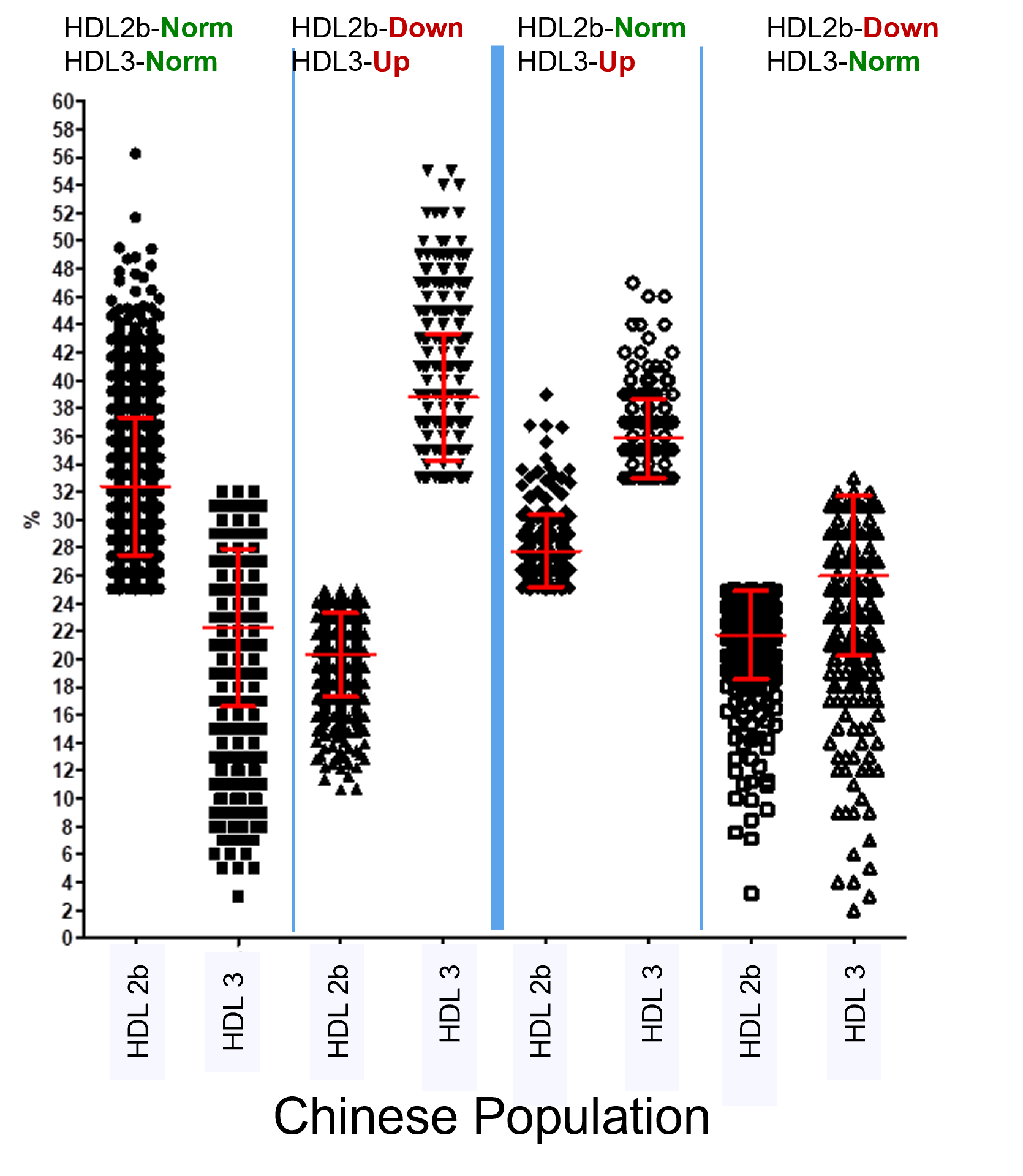CVD - The World’s Deadliest Disease
CVD is comprised of several disease classes including coronary heart disease (CHD), stroke, heart failure, arrhythmia, valvular heart disease, peripheral arterial disease (PAD), congenital heart disease, cardiomyopathy, and aortic aneurysms.
Together, they are the leading cause of death in the US and around the world.
CVD causes about 700,000 deaths each year in the United States. The most common CVD leading to death is coronary heart disease (CHD), followed by stroke and heart failure.
CVD causes about 17.9 million deaths each year worldwide, which represents about 32% of all global deaths.
Heart disease cost the US economy about $252.2 billion from 2019 to 2020. This includes the cost of health care services, medicines, and lost productivity due to death.
However, most of cardiovascular diseases are preventable with early intervention (per WHO Guidelines).
There's a critical need for more reliable methods for early CVD risk assessment.
The Need for Lipoprotein Subfraction Testing
The Framingham Study
136,905 Cases of confirmed CAD patients
A standard lipid profile fails to detect >60% of CAD risk
Am Heart J. 2009;157:111–117
A new national study has shown that nearly 75% of patients hospitalized for a heart attack had cholesterol levels that would indicate they were not at high risk for a cardiovascular event, based on current national cholesterol guidelines.
There is a need for more sophisticated cardiovascular biomarkers rather than simply lowering the target LDL levels in guidelines.
Lipoprotein subfraction testing can provide a much better risk profile than traditional lipid testing – especially when combined with traditional risk factors.
There are several hundred publications that have established lipoprotein subfractions as an independent risk factor for cardiovascular disease.
Several companies have launched lipoprotein subfraction tests (mostly as a CLIA waived service) but ultimately failed to have broad commercial success because lipoproteins are very difficult to detect.
All existing technologies for lipoprotein subfraction testing have one or multiple of these critical flaws: poor analytical performance, inability to scale up the testing, high cost per test, very long analysis times, requires highly skilled operators.
Callisto BioMed’s LipoSpec System
Based on microfluidic gel electrophoresis
Total analysis time per sample < 90 seconds (96 samples in <2 hrs)
Sample requirement: 5 µL – finger-prick compatible
Fully automated and easy-to-use
Highly reproducible
Reports 5 HDL subfractions with high accuracy (including HDL 2b)
Has Chinese FDA approval and US FDA approval is under way
The only reliable HDL subfraction testing method to date
HDL/LDL Subfraction Testing - the only automatic measurement of HDL and LDL subfractions in one analysis
The Sensitivity of LipoSpec is 84.5%, which is significantly higher than traditional lipid tests (by >30%)
Least expensive technique
Lipoprotein subfraction assays for CVD risk assessment are reimbursed in the US (CPT code 83701, reimbursement amount: $34.99, varies by state)
Callisto BioMed Data: Reference Ranges
Callisto BioMed Data: Sensitivity, Specificity
Cross-Section Analysis of HDL-2b With Confirmed CAD
Large-scale 1270 patient study confirms much stronger correlation with CAD than standard lipid panels, confirming that HDL-2b is an independent risk factor.
Callisto BioMed Data: Atherosclerosis Risk in Insured Clients
2,659 insured patients
Presumably healthy patients
35% abnormal HDL profiles
Matches Chinese national epidemiological data Correlates with early atherosclerosis risk
Callisto BioMed Data: 346 Tech Industry Entrepreneurs
346 Younger to middle aged patients
Presumed healthy
high-stress jobs
Tested during annual physical
43% abnormal HDL profiles
However, mostly mild and moderate abnormalities
List of Peer Review Publications
Deng,et al: High-Density Lipoprotein Subfractions by Microfluidic Chip Electrophoresis Predict the Vulnerability of Intracranial Plaque:A High-Resolution MRI Study (HRMRI). Clinica Chimica Acta 2024; 553:117713
Geng, et al: Association between the Proportion of HDL-Cholesterol Subclasses and the Severity of Coronary Artery Stenosis in Patients with Acute Myocardial Infarction. J Clin Lipidol 2024 (submitted) (Beijing Tsinghua Changgung Hospital,Tsinghua University, Beijing, China)
Tang, et al: Low level of high-density lipoprotein-2b is associated with urinary microalbumin in prediabetes and diabetes. J Diabet Invest 2024; (Revision)
Chen, et al: The Association of HDL2b with Metabolic Syndrome Among Normal HDL-C Population in Southern China. Diabetes, Metabolic Syndrome & Obesity: Targets and Therapy 2024; 363-377
Lin, et al: An Automatic Fast High Resolution HDL Subfractioning Assay Using Microfluidic Electrophoretic System. Jnp J Res 2023; 4(6):1-5
Tang, et al: Potential role of anti-inflammatory HDL subclasses in metabolic unhealth/obesity ART CELLS, NANOMEDICINE, AND BIOTECHNOLOGY. 2021;49: 565–575
Lee, et al: Association of proportion of the HDL‑cholesterol subclasses HDL‑2b and HDL‑3 and macrovascular events among patients undergoing hemodialysis. Scientific Reports 2021; 11:1871
Editorial. Improving clinicians understanding of lipoprotein sub-fractions through new technology. Clin Chem Lab Med 2008;46(4):427–428
Yang, et al: Performance characteristics of a microfluidic Lab-on-Chip electrophoresis system for high-density lipoprotein (HDL) subfraction separation and measurement. Clin Chem Lab Med 2010;48(6):883–889
Mueller et al: PROCAM Study: risk prediction for myocardial infarction using microfluidic high-density lipoprotein (HDL) sub-fractionation is independent of HDL cholesterol. Clin Chem Lab Med 2008;46(4):490–498
Li, et al: Changes in plasma HDL and its subcomponents HDL2b and HDL3 regulate inflammatory response by modulating SOCS1 signaling to affect severity degree and prognosis of sepsis. Infect Genet Evol. 2021; 91:104804. (doi: 10.1016/j.meegid.2021.104804) (IF:4.4)
王, et al: 利用微流芯片技术探讨中国家族性高胆固醇血症病人高密度脂蛋白及亚组份的变化. Chin J Arteriosler 2007; 15:536
Xian, et al: Reduced high-density lipoprotein 2b in non-obese type 2 diabetic patients analysed by a microfluidic chip method in a case–control study. Biomarker 2009; 14 (8): 619-623
C Li; Deng, D; Jing, D; Love, W; et al.: A Rapid Microfluidic Chip Assay for HDL-C and HDL Subclass Distribution. Clinical Chemistry, suppl. 2006; 52(S6) A116-A117.
Xiao, et al: A case-control study on the relationship between HDL2b and non-alcoholic fatty liver disease in Chinese type 2 diabetic patients Clin Chem Lab Med 2009; 47:1067–72.
Hu, et al: A case–control study on reduced HDL2b in patients with polycystic ovarian syndrome. Gynecological Endocrinology 2016; 32(10):848-851
Superko, R: Advanced Lipoprotein Testing and Subfractionation Are Clinically Useful. Circulation. 2009;119:2383–2395
Superko, et al: High-density lipoprotein subclasses and their relationship to cardiovascular disease. High-density lipoprotein subclasses and their relationship to cardiovascular disease. J Clin Lipid 6:, Issue 6, November–December 2012, Pages 496-523
Rizzo, et al: Subfractions and Subpopulations of HDL: An Update. Current Med Chem 2014; 21 (25): 2881-2891











